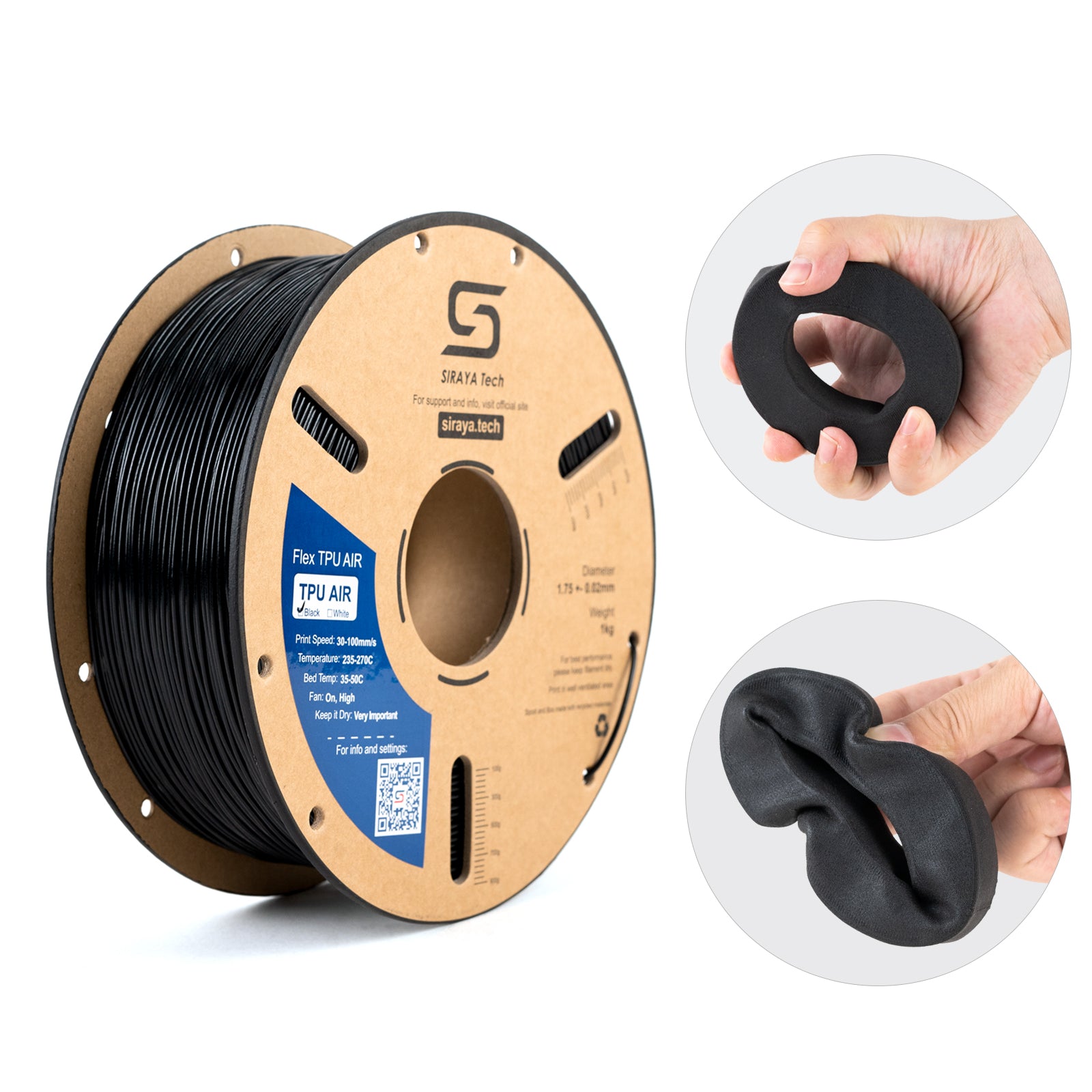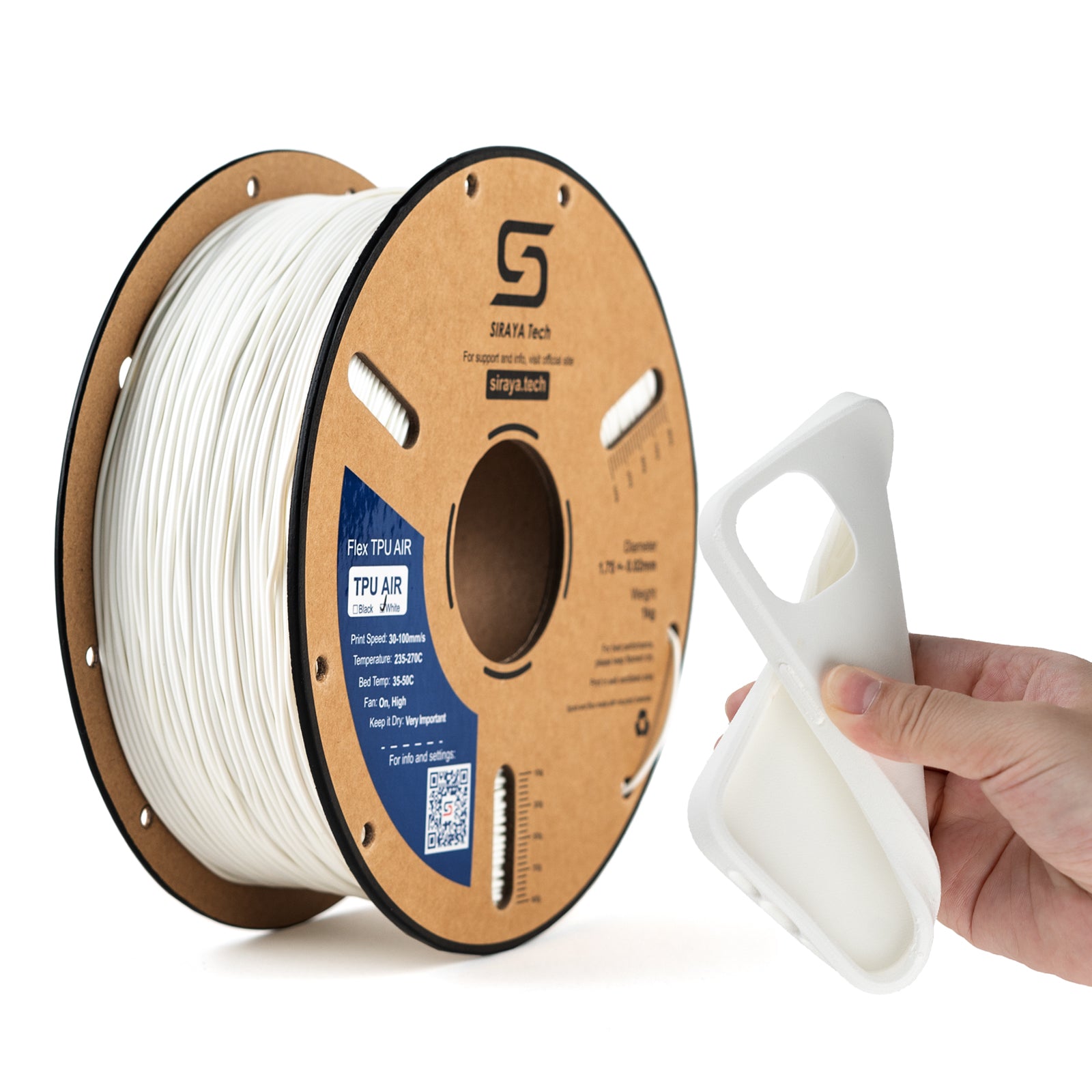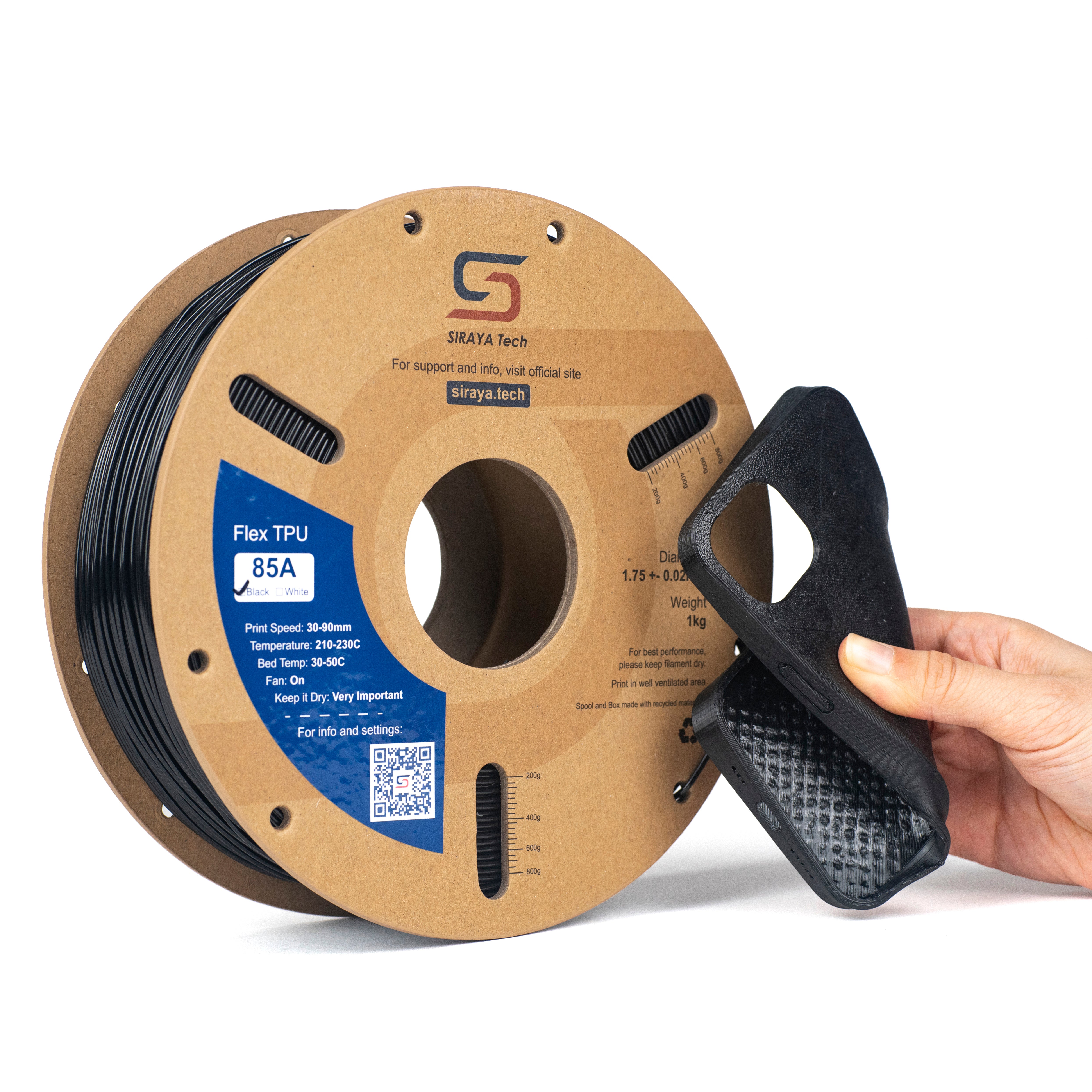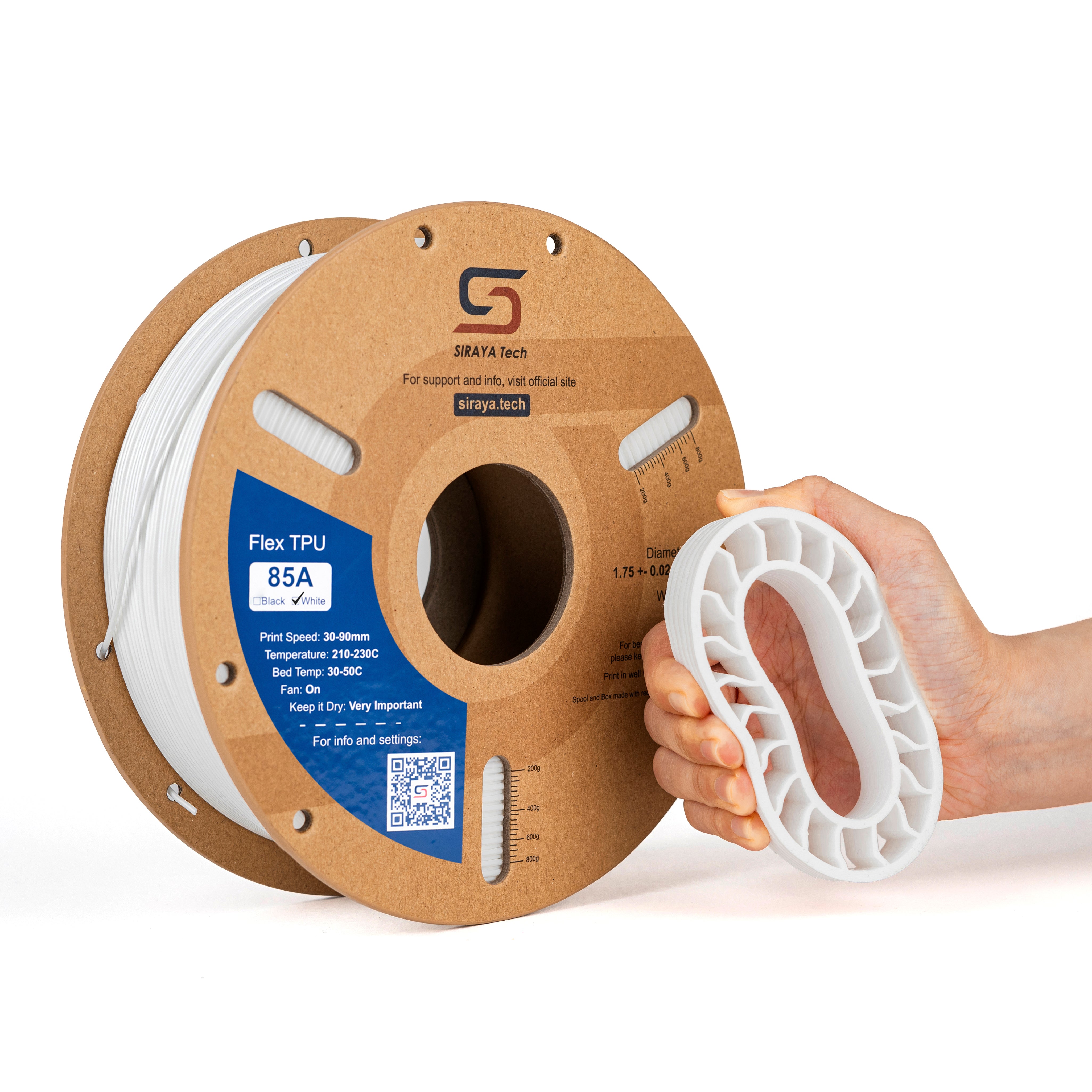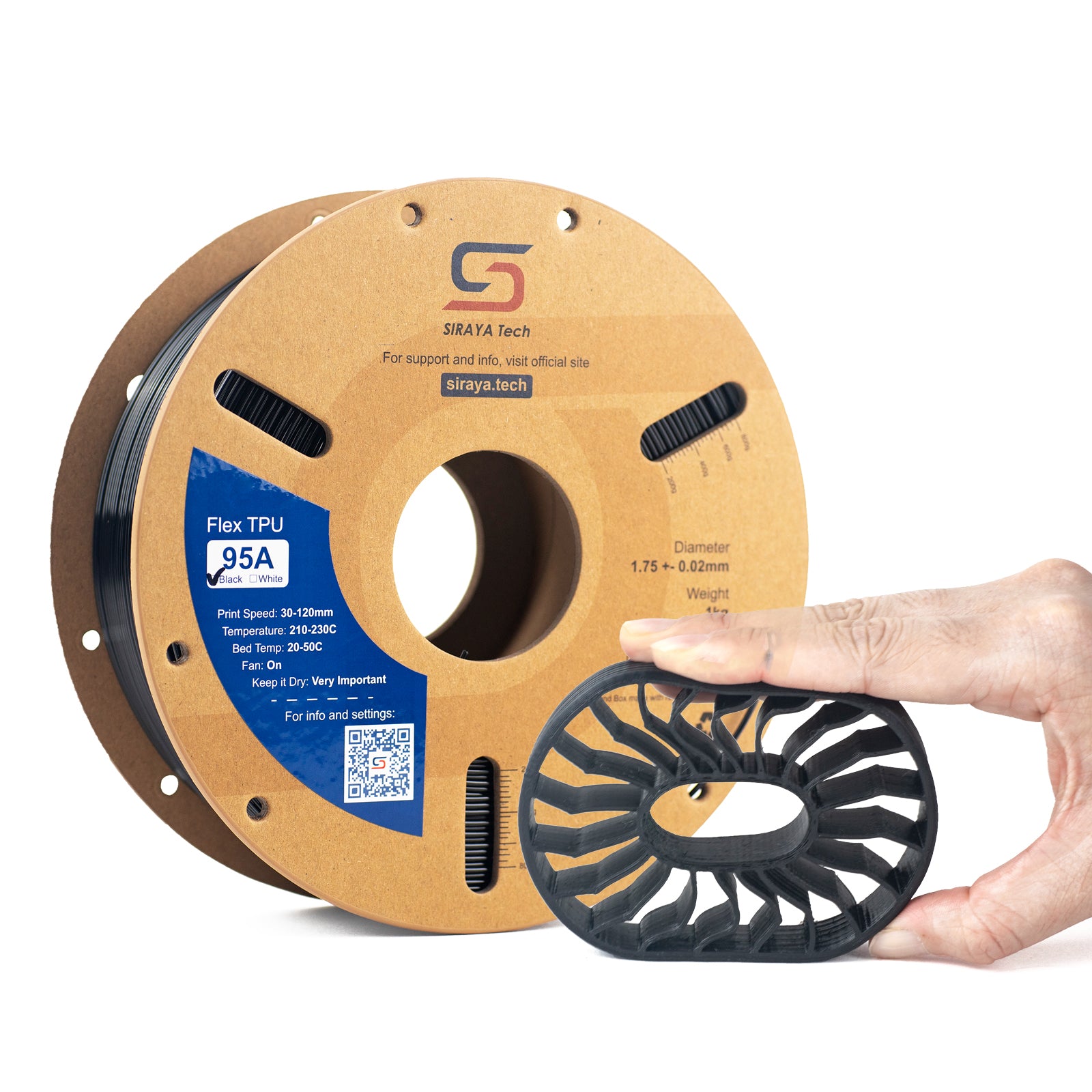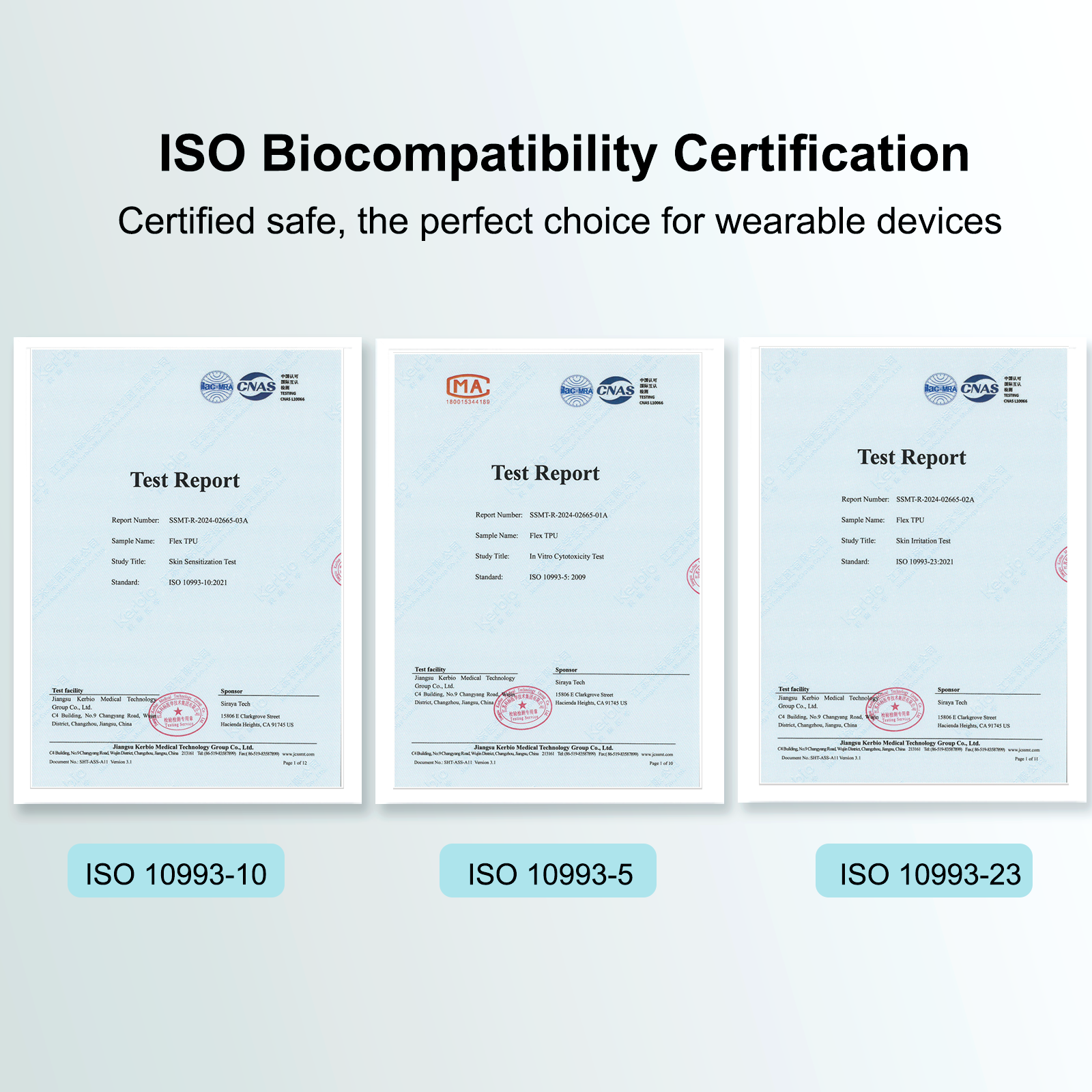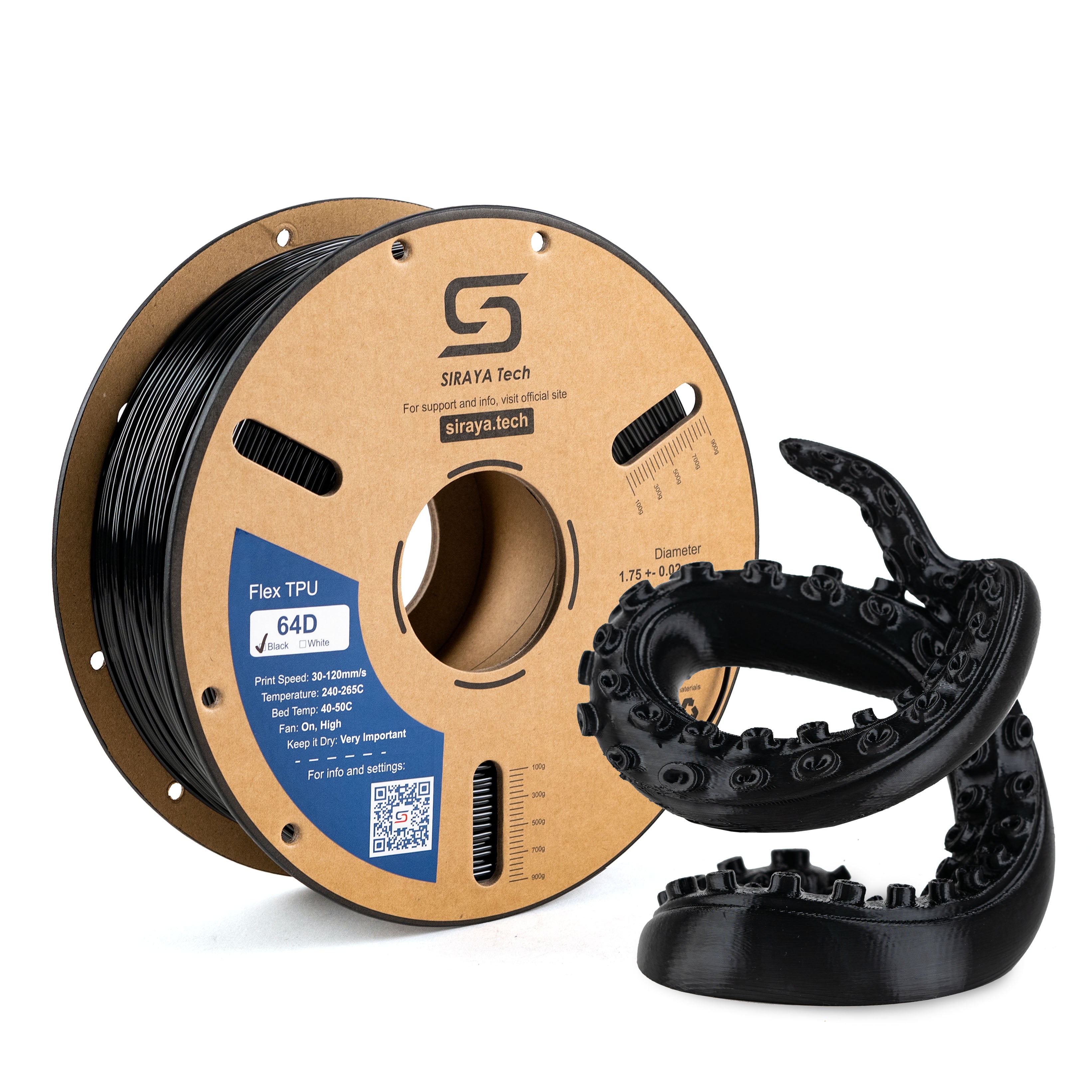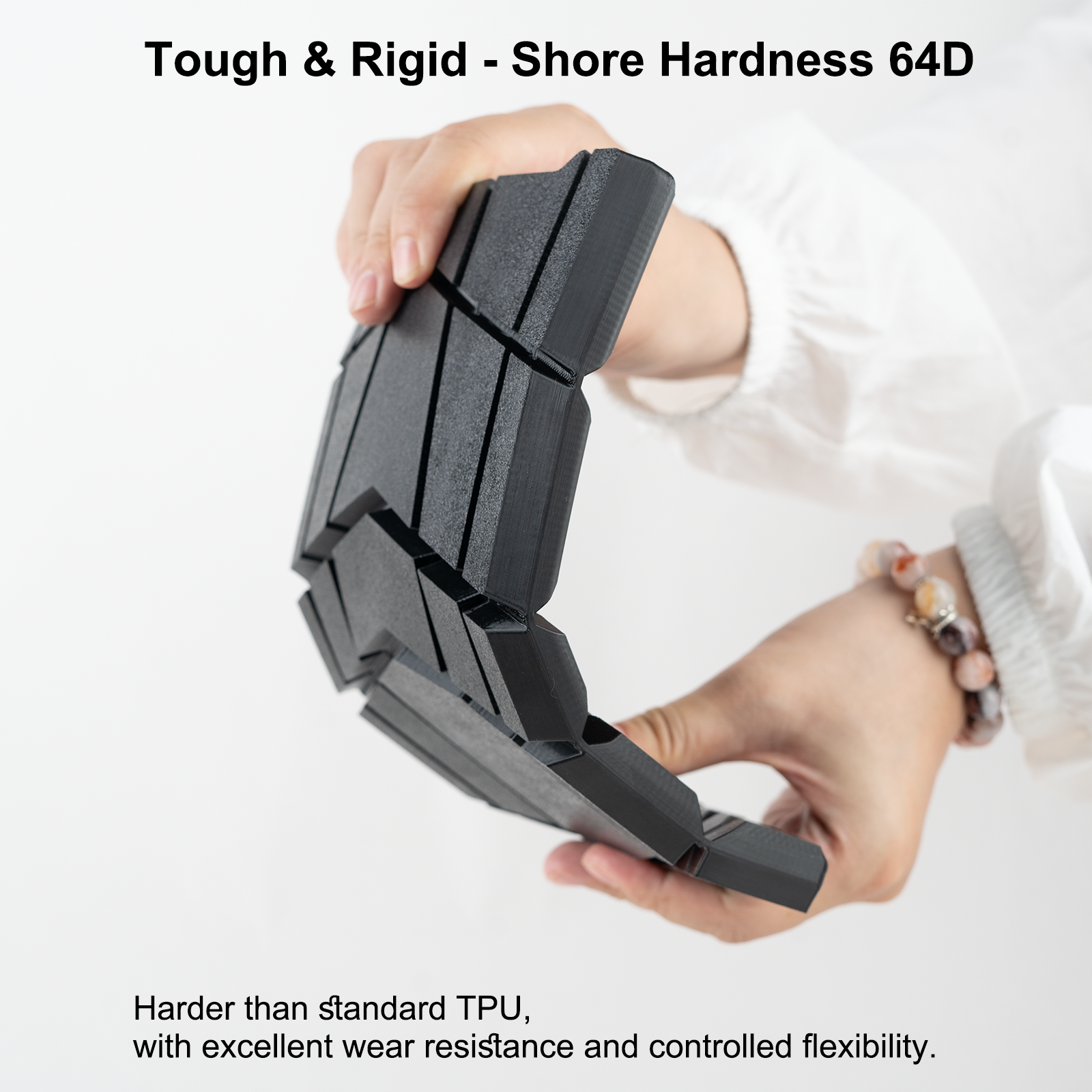Recently viewed
TPE filament from Siraya Tech gives you soft, stretchy, impact-ready prints that still look clean and pro. You get parts that bend without cracking, grip without slipping, and bounce back after pressure.
If you’re prototyping grips, seals, phone-safe bumpers, or wearable bands, this flexible thermoplastic elastomer delivers the sweet spot of elasticity and strength.
We stock tuned TPE options at Siraya Tech so you can print confidently on everyday FDM printers with settings you already know.
Prints That Bend Not Break With TPE Filament
TPE filament flexes, absorbs shock, and snaps back to shape. It feels soft in the hand yet resists tearing under daily use. You get durability for real-world parts, not just desk demos.
Everyday Performance You Can Feel
The material handles repeated squeezes and twists. It stays stable across a wide temperature range, so your parts keep their form in the car, gym, and shop.
- High elasticity for living hinges and gaskets.
- Strong abrasion resistance for grips and soles.
- Natural vibration damping for tools and RC parts.
- Resists micro-cracks better than stiff plastics.
Print Strong Parts That Last
Strength meets adaptability. TPE filament balances toughness with elasticity, giving you durable parts that don’t snap under stress.
Built for everyday use
From high-wear parts to flexible connectors, TPE keeps your prints in top shape even with repeated use.
- High resistance to wear and tear
- Maintains form under repeated pressure
- Perfect for functional prototypes and real-world testing
Smooth Printing With Reliable Results
TPE filament may be flexible, but it still delivers consistent prints when handled right. At Siraya Tech, we make sure quality is always part of the process.
Printing made easier
With the right setup, you’ll enjoy stable extrusion, strong adhesion, and clean finishes that bring your designs to life.
- Excellent layer bonding for durable builds
- Reduced stringing with proper settings
-
Smooth surface finish for a clean look
Designed For Comfort And Practical Use
Feel the difference when your parts don’t just work but also feel right. TPE’s soft touch makes it ideal for projects that require user comfort.
Beyond utility
It’s not only about performance, but also about experience. From handles to wearables, TPE provides a soft yet strong feel.
- Comfortable to grip or wear
- Skin-friendly and safe for personal use
- Versatile for both hobby and industrial projects
Collections To Explore
- 3D Printer Filament – A wide range of materials for every type of project.
- TPU Filament – Flexible like TPE but with a firmer bounce for added structure.
- PETG Filament – Strong, reliable, and perfect for functional parts with less flexibility.
FAQs About TPE Filament
What is a TPE filament?
TPE filament is a flexible 3D printing material made from thermoplastic elastomer. It feels rubber-like, allowing prints to bend, stretch, and absorb impact. Because of its softness, it is used for making phone cases, grips, seals, and wearable items. TPE is popular when flexibility and durability are needed in printed parts.
Is TPE hard to print?
Yes, TPE can be harder to print than rigid filaments like PLA or ABS. Its softness makes it prone to stringing, clogging, or slow feeding in the extruder. Printing at slower speeds with good retraction settings usually helps. Many users also prefer a direct drive extruder for better results.
Is TPU the same as TPE?
TPU is a type of TPE, but it is slightly firmer and easier to print. Both materials are flexible, but TPU offers more control and less print difficulty. TPE is softer and stretchier, while TPU balances flexibility with strength. Many people choose TPU for reliable flexible prints.
Is TPU 85A or 95A better?
TPU 85A is softer and more flexible, making it better for parts that need to bend or stretch a lot. TPU 95A is firmer and holds shape better, which works well for protective parts like cases or mechanical components. The choice depends on how much flexibility you need. Softer means more bend, while harder means more structure.

